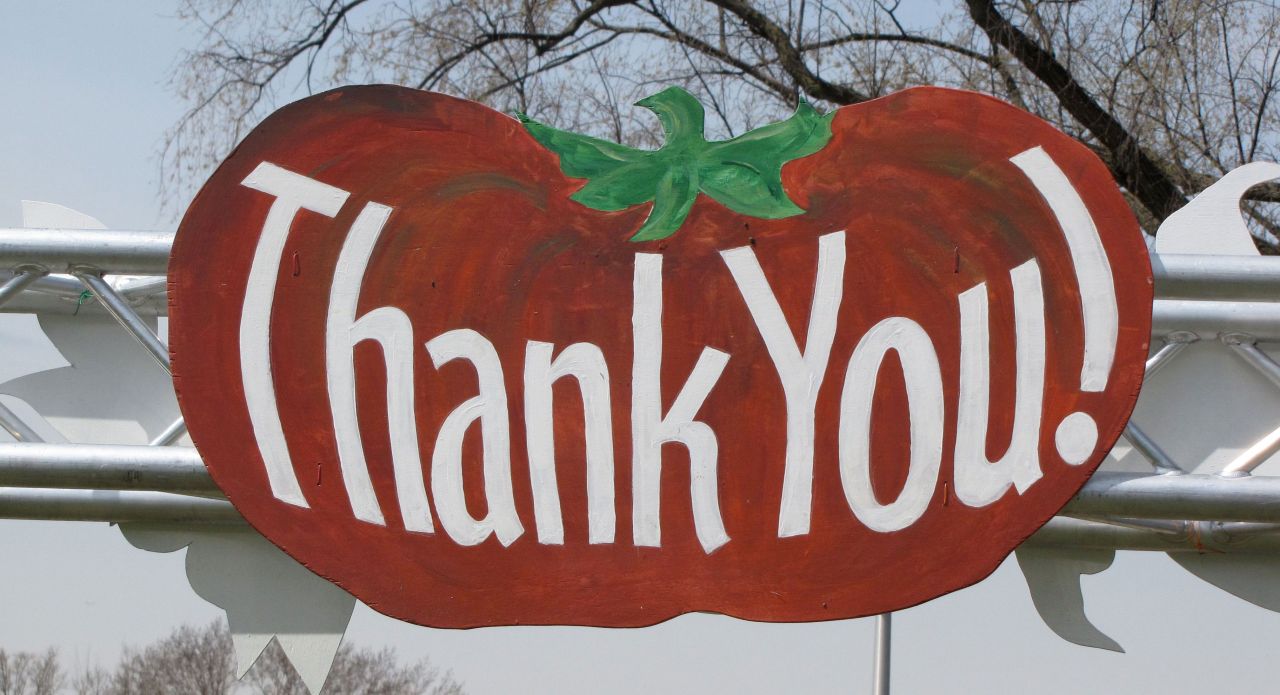Unstinting volunteer efforts make the Friends School Plant Sale what it is. Each “first” has its own story, but this list gives an overview. We are grateful.
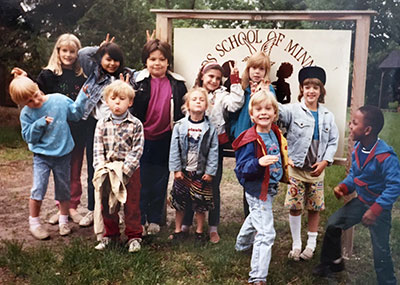 1988–89
1988–89
- Friends School of Minnesota opened, using rented space at the Episcopal Church of St. James on the Parkway, Minneapolis.
1990
- Head of School Raquel Wood asked Henry Fieldseth, a school parent, if he was interested in starting a plant sale as a fundraiser.
- Henry connected with Green Fingers Farm and they made a list of plants (annuals, perennials, vegetables, herbs). The first catalog was a single sheet of paper, two-sided and 8.5x11”.
- Pre-orders were taken and plants were delivered on Friday before Mothers Day. Leftovers were sold Saturday at the Twin Cities Friends Meeting House. In total, we sold about 2,000 plants.
1992
- The school moved to Christ the King Lutheran in the Longfellow neighborhood.
- Pre-ordered plants were set up in the courtyard. Overflow plants were again sold at the Meeting House on Saturday.
1993
- A group of school parents began meeting with Henry to help run the sale.
1994
- The sale moved completely to the Twin Cities Friends Meeting House on Grand Avenue in St. Paul, with the plants laid on the ground. Henry slept on the porch with his dog.
- The catalog was eight pages, 8.5x11”.
1995
- We built our first “tables” (only one foot tall) from donated 20’-long 2x12s. Later, the 2x12s were raised onto sawhorses.
- The catalog switched to newsprint, 11x17” page size.
1996
- Botanical artwork was added to the catalog.
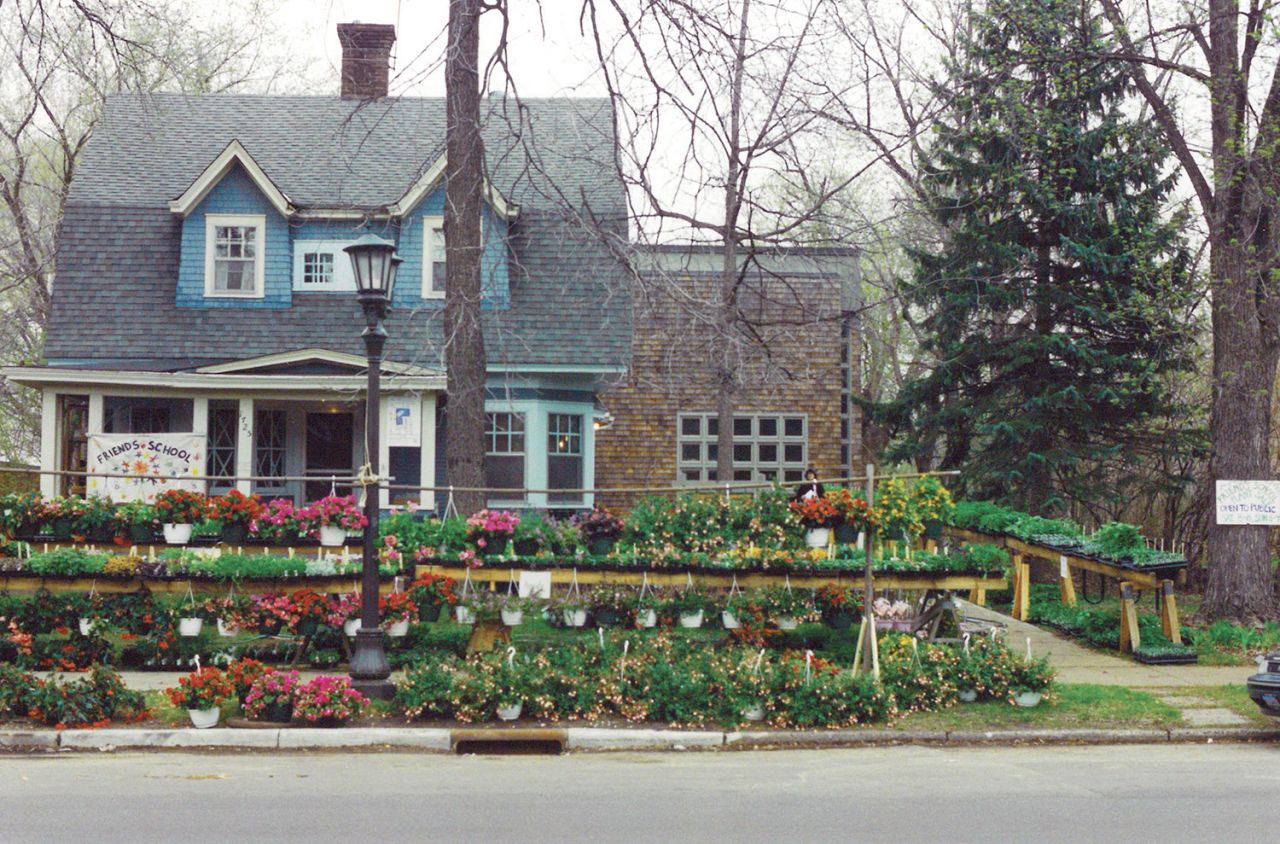
The last sale at Twin Cities Friends Meeting House, 1996.
1997
- The school bought a building at 1365 Englewood Ave. in Saint Paul. The sale was in the parking lot during renovation, while the students remained in Minneapolis.
- First year of the Lily Shop (later Bulbs & Bareroots).
1998
- We decided to end pre-ordering because we could no longer fulfill all the orders. Scary to not know what to expect, but it worked!
1999
- The first year school was held in the new Saint Paul building.
- The checkout lines were very backing up, so we decided to let customers write their own plant lists and created the tallyer job, separating that part of the process from cashiering.
- Refreshments were sold out of an RV: homemade giant Rice Krispie bars and root beer.
2000
- We started our first plant database. Plant info was exported to create the catalog.
- Volunteers were listed by shift, with big printouts posted in the entryway. People could call in or sign themselves up.
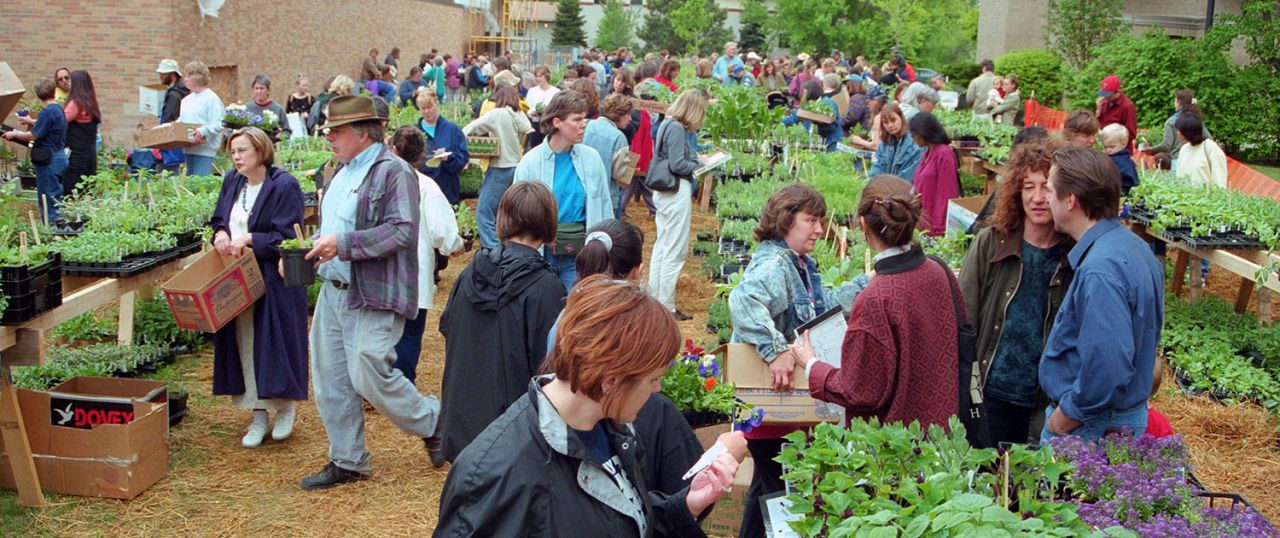
The sale alongside the new school, May 2000 (see the gym under construction in the background).
2001
- We asked for volunteers outside the school community through a postcard mailing.
- The tables blew down on Sunday before the sale.
2002
- We made paper signs for each plant with descriptions and prices and figured out how to hang them all. (Previously, the only signs were handwritten paint-stirring sticks.)
- Frost was forecast, so we moved many of the plants inside the school, bucket-brigade-style. • Inventory was done for the first time.
2003
- We rented big tents to deal with the cold.
- We added the “Orchid Hut,” which later became Unusual and Rare Plants.
2004
- The rented tents blew up in the air because of straight-line winds on Sunday at 5:00 p.m. No one was hurt, but cars nearby were damaged.
2005
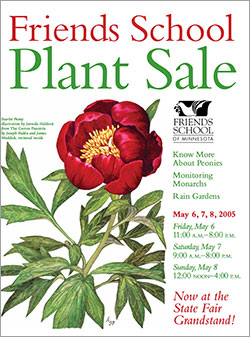 During the 2004–05 school year, we figured out how to move to the State Fair Grandstand.
During the 2004–05 school year, we figured out how to move to the State Fair Grandstand.- The entrance was at the east door and the exit was through the big door at the west end. Cashiers felt like they were sitting in a wind tunnel and shopping carts had to be pushed from one end of the building to the other.
- We got tie-dye shirts to identify volunteers.
- We made more tables and started to store everything on rented trailers.
- The plants mostly arrived on rolling carts, making unloading easier.
- First full-color catalog cover.
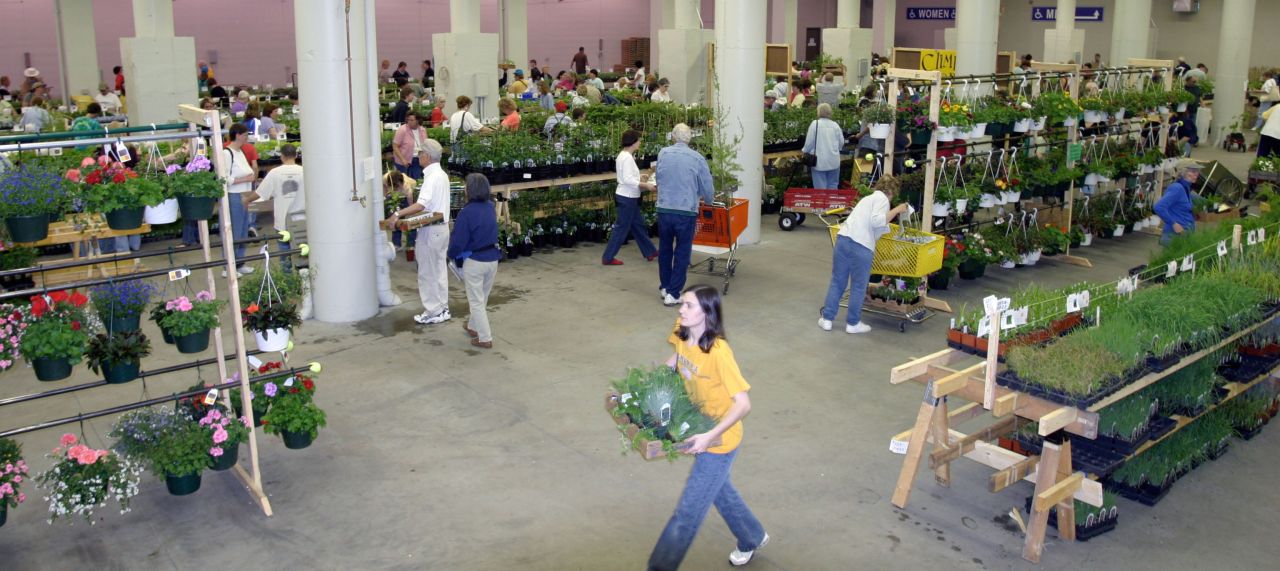
The first year in the Grandstand, 2005.
2006
- First website created.
- After a major checkout line backup, we created an “Enter Line Here” sign and increased the number of tallyers and cashiers.
2007
- We improved the plant-delivery process, allowing increased Saturday restocking.
2008
- Online volunteer signup system launched.
- Wristband system used for shoppers entering.
- Taller tables designed and built for annuals to fit in more plants.
- Shrubs, trees, roses, and fruit moved outside.
- The “round-up” program started at checkout.
2009
- New website built with pages for each plant and the ability to make your shopping list.
- Native plants and grasses moved outside.
- Sale layout changed to have both the entrance and exit at the west end (a middle school student’s idea!). The east door became the volunteer door.
2010
- New sign stands built for shrubs, trees and fruit.
- Our first watering cart went into service.
- Walkie-talkies for better communication. (We went five years without walkie-talkies... imagine.)
- We began systematizing the collection and sorting of black plastic for reuse by the growers.
2011
- Garden Fair and wristband distribution moved to Block 39, across the street from the sale entrance. PA system was added.
2012
- Workshops held in the Garden Fair.
2013
- New wristband booth put into service.
- Sunday hours changed to 10:00 a.m.–2:00 p.m.
2014
- Online signup switched to Volunteer Local system.
- Neonic pesticide awareness and new policy banning them.
2015
- Added much larger signs at the end of each row, showing the plants’ numbers on each table.
2016
- Info Tent added in the Garden Fair.
- Website upgraded for mobile devices.
- Seed packets now mixed in with plants.
2017
- Minnesota Water Garden Society joined the Garden Fair.
2018
- In total, we sold more than 300,000 plants.
2019
- Thank you to all our volunteers and customers for an amazing 30 years!
